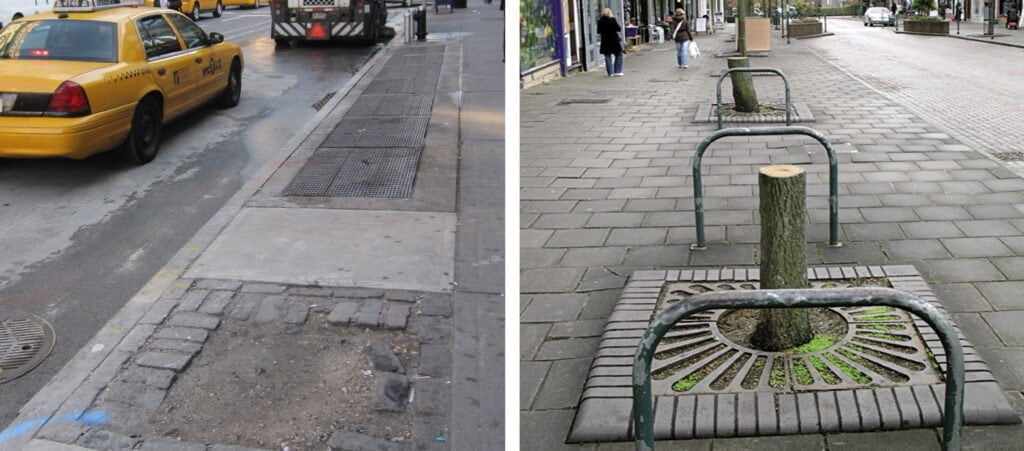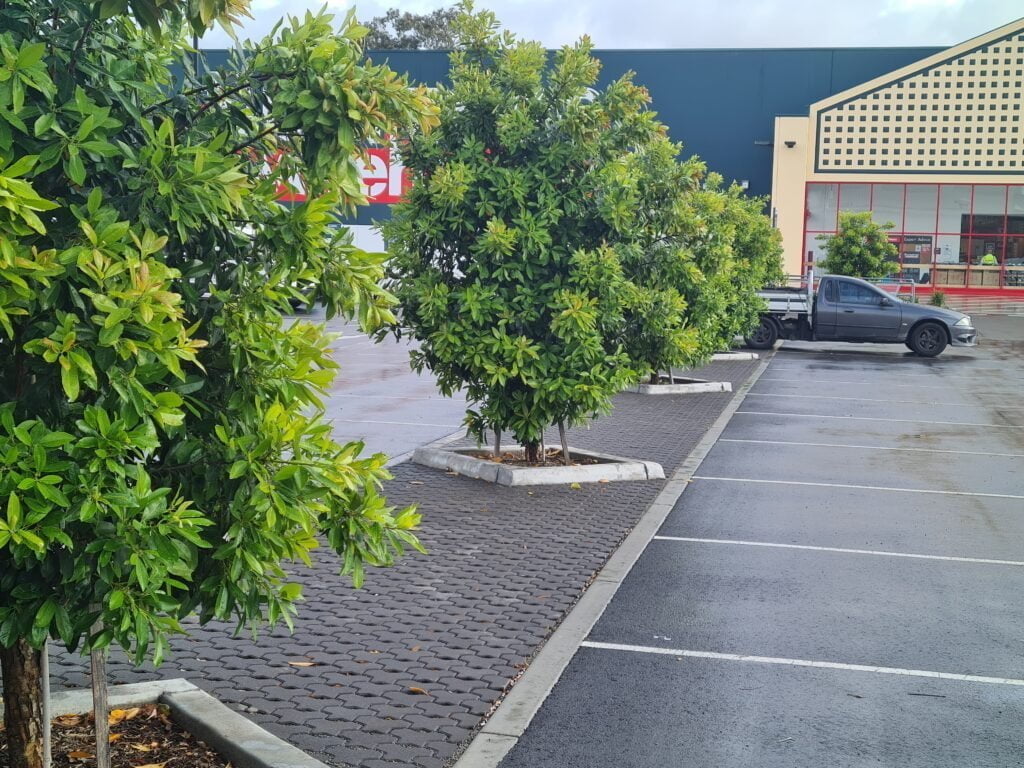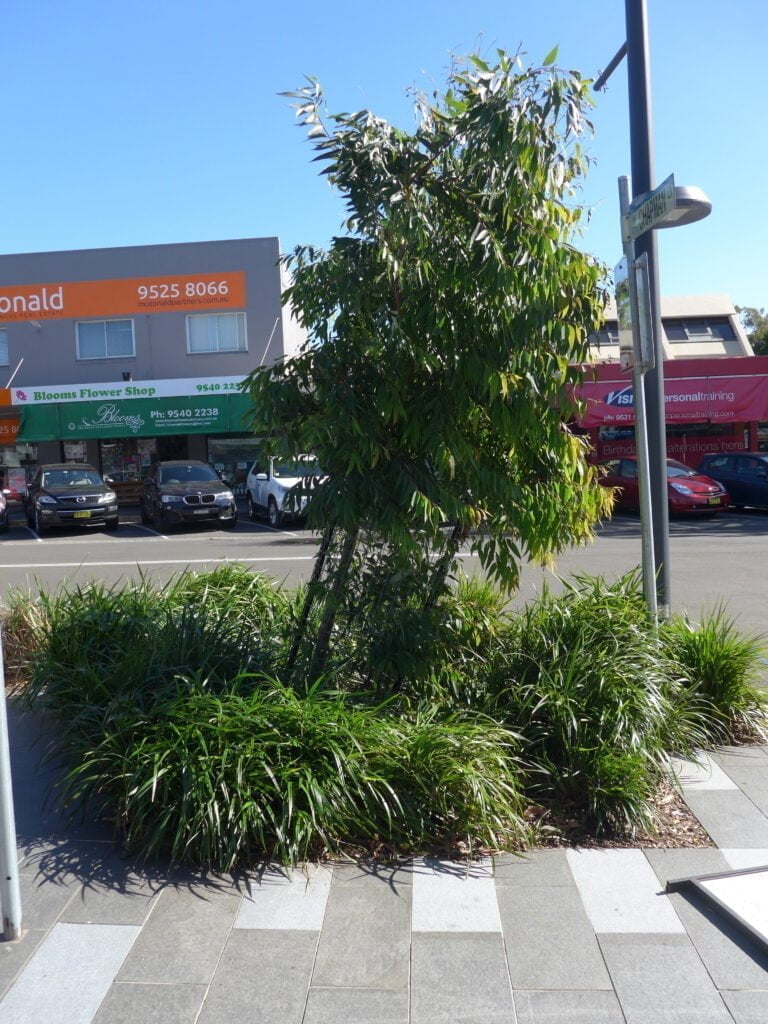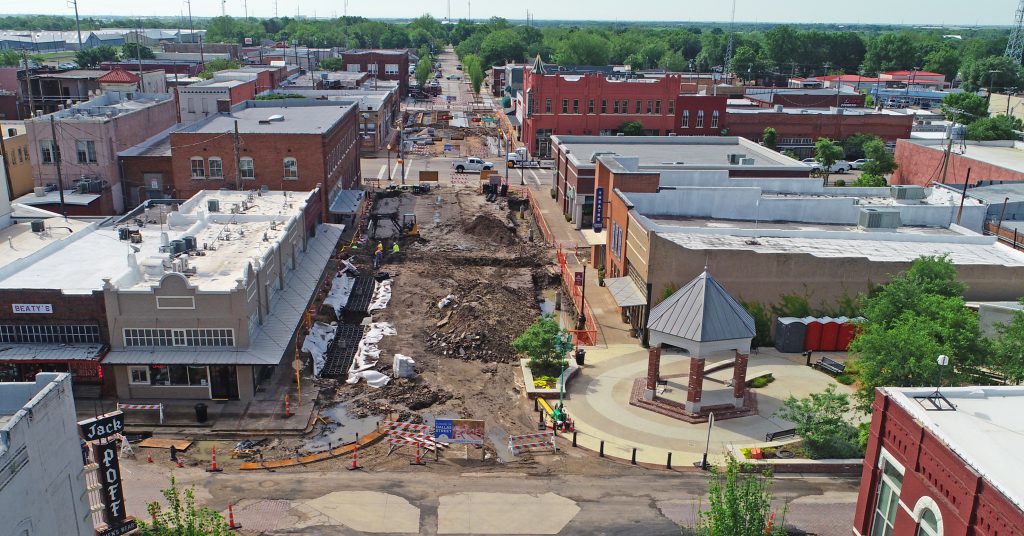Posted by Ben Gooden on Tue, Mar 22, 2022 @ 9:38 AM
Why Don’t Trees Grow Well in Cities?
In every city, around the world, you see trees that are not meeting their full potential within the urban environment. To the human eye, these trees can appear twisted or have damaged branches, making them unhealthy and deformed.
In severe cases, the trees will gradually decline and end up being removed, with just an open grey space in the pavement remaining.

Sadly, cutting down dying trees from city landscapes has become all too familiar, and is something we want to explore in this article.
Designing a Tree Planting Method
One of the first reasons for unsuccessful tree growth, in many cases, lies in the failure to fully design a tree planting method. The implementation of any successful method, must first ask questions surrounding the location of the site: what is the soil profile that the tree is being planted into; will there be enough air-filled porosity or oxygen at the depth of planting; does the location have the necessary space to provide for the tree’s root system, is there enough soil for the tree to actually thrive once it reaches maturity?
These questions must then be answered by adopting appropriate solutions, such as: applying nutrients to amend the soil profile where necessary; choosing the best-sized tree to fit the location, avoiding having to repair tree root damage to pavements; utilising road-based material that is conducive to tree growth; installing adequate draining mechanisms, so that the tree does not become waterlogged in wet seasons.
Typically, the cities with a healthy and thriving urban forest today, have adopted a comprehensively designed tree planting method to overcome the problem of frequent tree deaths within city landscapes. However, if a tree planting method, like the one discussed above, cannot be fully funded, then tree growing failures in cities will continue to occur.

Tree Planting Budget
To allow trees to reach full maturity, and ideally become self-sufficient, a suitable budget and management plan must be allocated. Without a sufficient budget, cities will experience the premature deaths of city trees, which will need replacement within 3-5 years of planting.
A well-funded tree planting program would avoid the cost of continual tree removal and replacements, and increase the future value of trees as an asset within any urban environment.

Human Behaviors
Another reason for trees not growing well in cities is human behavior.
This can be broken up into a number of areas, but one is vandalism. Unfortunately, it is not uncommon, to see trees vandalized, especially young trees. Once trees are beyond a certain stage of life, they tend to be less susceptible to vandalism, but while they’re young, they are very vulnerable to being damaged by vandals: debarking trunks; snapping branches; or scratching graffiti onto limbs
Traffic impact is another human behavior that negatively affects tree growth. This frequently occurs with curb plantings, whereby trees are planted close to the roadside or powerlines. If crown lifting is not performed, and the trees develop a low canopy, then low-lying branches can be smashed and damaged by passing traffic. This is especially the case, where you see a camber on the road that causes tall vehicles to intersect with the tree’s canopy, causing limbs and branches to tear off, allowing infection to set in.

Low-speed vehicular impact in parking lots can similarly impact tree growth. This frequently happens in parking lots, where trees have been planted with the best intentions, but wheel stops have been either omitted or placed in the wrong positions.
For example, at home improvement centers, frequented by trade vehicles with overhanging tray bodies; reverse parking can lead to vehicles, unintentionally smashing into the young trees. This can be overcome by studying the trees surrounding, to allow for better tree placement and tree protection.
An Altered Environment
The urban climate in which trees are planted can also lead to poor growth performance. Cities have their own microclimate, which is a very different environment to the natural forest. It is well documented that some tree species will actually grow a lot faster in a city than they will in their natural open forest environment, because of the urban heat island effect, leading to warmer temperatures and thus more growth.
However, in a lot of cases, the urban environment does not necessarily result in successful tree growth. For example, wind velocities in city landscapes are very different to the natural forest environment.

In the forest, trees are protected by one another against environmental forces of nature, but in urban planting, trees are typically planted on their own, and therefore become more exposed.
Adding to this exposure is the fact that the trees are often planted in close proximity to tall buildings, where the street forms a canyon. Winds can then blast up this ‘canyon’ with extremely high velocity, blowing the trees around, causing damage to the root systems.
Oftentimes, the wind will cause a young tree’s root system to be weakened, which may only be noticeable when the tree becomes much larger, unfortunately resulting in limbs breakages, or a whole tree collapses, which can be catastrophic.
Solutions
Fortunately, there are solutions to all of these issues. Citygreen has decades of experience in successfully establishing urban forests to prevent premature tree death. A system that Citygreen has patented and used throughout the world with success is the Stratavault™ system.
Case Studies – Stratavault™ system
Downtown Ennis, located south of Dallas, in the United States, is known for its 19th-century historic architecture and iconic brick streets. With its current population of over 20,000, the city was looking to cultivate residential growth.
With this goal in mind, Citygreen’s Stratavault™ system was chosen the make the area more attractive, accessible and beneficial to downtown residents and tourists alike.
Adopting a ‘Green Streets’ approach, the areas impermeable curb and gutter section was replaced with a suspended paving system – that is, Citygreen’s Stratavault™ system, to allow trees to grow and thrive into maturity.
Capable of supporting heavy duty vehicular loading, permeable pavers were installed on top of soil cells which provided a medium for trees to grow in, whilst also capturing stormwater on-site to irrigate the trees.
Citygreen’s Stratavault™ was also utilised to enhance the redevelopment of Barangaroo South, in Sydney, Australia.
Designed to encourage both passive and active outdoor activities, the redevelopment of Barangaroo South’s landscape, initially faced significant difficulties. The density of paved areas and streets, was not able to provide a conducive environment for trees to thrive in.
To overcome this problem, Citygreen’s Stratavault™ was utilised. With its open matrix design, the system ensures that there is enough uncompacted soil space to facilitate strong root growth without damaging the surrounding paved surfaces.


Call us Today
As shown above, Citygreen is an expert in every phase of design, and implementation of streetscape upgrades, incorporating healthy, sustainable green infrastructure – reach out to Citygreen for a Design Workshop today.

